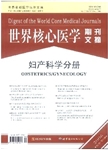脐绕颈在足月分娩、过期分娩中是否有必要预知
Nuchal cords in term and postterm deliveries-Do we need to know?作者机构:Frauenklinaffer Universitkstrasse 10 CH-8091 Zürich Switzerland Dr.
出 版 物:《世界核心医学期刊文摘(妇产科学分册)》 (Core Journal in Obstetrics/Gynecology)
年 卷 期:2005年第1卷第11期
页 面:50-51页
学科分类:1002[医学-临床医学] 100211[医学-妇产科学] 10[医学]
主 题:过期分娩 足月分娩 脐绕颈 新生儿结局 围生期 过期产 足月产 临床处理 产时 过期妊娠
摘 要:Objective: To analyze the effect of nuchal cords on perinatal features at delivery of term and postterm pregnancies. Methods: A total of 11,748 women with planned vaginal deliveries, including 9,574 term and 2,174 postterm deliveries, were analyzed for intrapartum events, clinical peripartum management, mode of delivery, and neonatal outcome. The presence of nuchal cords was diagnosed clinically at the time of delivery. Data were obtained from our perinatal database between 1995 and 2004 for retrospective analysis. Results: The incidence of nuchal cords in term and postterm deliveries was 33.7% and 35.1% , respectively. Multiple nuchal cords were present in 5.8% of term and 5.5% of postterm deliveries. Intrapartum signs of fetal compromise were increased in all groups, albeit not all reaching statistical significance in postterm deliveries. Meconium staining was significantly increased only in multiple nuchal cords of postterm deliveries (42.1% compared with 30.1% , P .05). Mode of delivery was unchanged in all nuchal cord groups. Unfavorable neonatal blood gas values were significantly more frequent in all nuchal cord groups. Nevertheless, 5-minute Apgar scores less than 7 were not more common, and admission to neonatal unit was not required more frequently. Neonatal mean birth weight was significantly lower in all nuchal cord groups. Conclusion: Nuchal cords do not influence clinical management at delivery, and neonatal primary adaption is not imapired. Our data show that ultrasonographic nuchal cord assessment is not necessary at the time of admission for delivery.



